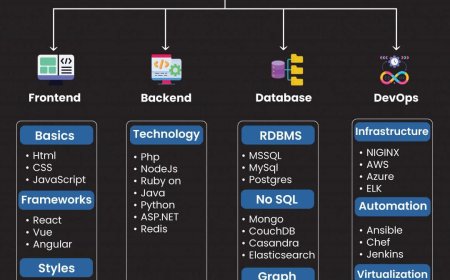The Future of IT: Why Cloud Modernization is Non-Negotiable in 2025

The pace of technological change in 2025 is nothing short of breathtaking. As digital disruption sweeps across every industry, organizations are being forced to rethink their technology foundations. The days of relying on legacy IT systems are over. Today, cloud modernization is not just a competitive advantage its a non-negotiable requirement for survival and growth. At the heart of this transformation areManaged Cloud Services, which are making the journey to a modern, agile, and secure IT environment not just possible, but essential. Why is cloud modernization now a must-have, and how are leading enterprises leveraging Managed Cloud Services to stay ahead? Lets explore the trends, strategies, and real-world impact shaping the future of IT.
The Business Case for Cloud Modernization
Legacy systems are a drag on innovation, agility, and cost efficiency. They are expensive to maintain, slow to adapt, and often riddled with security vulnerabilities. In contrast, cloud modernization enables organizations to:
- Respond to market changes in real time
- Launch new products and services faster
- Reduce operational costs and technical debt
- Enhance security and compliance
- Attract and retain top talent who want to work with modern technologies
Managed Cloud Services provide the expertise, automation, and continuous support needed to realize these benefits at scale. They allow organizations to focus on their core business while experts handle the complexity of cloud operations, optimization, and security.
Key Trends Driving Cloud Modernization
1. AI and Machine Learning Integration
Modernized cloud platforms make it easy to integrate artificial intelligence (AI) and machine learning (ML) into business processes. From predictive analytics to intelligent automation, these technologies are transforming how organizations operate and compete. Managed Cloud Services help enterprises deploy, monitor, and optimize AI/ML solutions, ensuring they deliver real business value.
For example, a logistics company used cloud modernization to integrate AI-driven route optimization, reducing delivery times and fuel costs. With Managed Cloud Services, the company could scale its AI models globally, monitor performance, and continuously improve outcomes.
2. Edge Computing and IoT
The rise of edge computing and the Internet of Things (IoT) is revolutionizing industries from manufacturing to healthcare. Cloud modernization enables seamless integration of edge devices, real-time analytics, and secure data flows between the edge and the cloud. Managed Cloud Services ensure these complex, distributed environments are always optimized, secure, and compliant.
A manufacturing enterprise, for instance, modernized its supply chain by connecting IoT sensors to a cloud-based analytics platform. This enabled real-time monitoring, predictive maintenance, and rapid scaling, resulting in a 20% reduction in downtime and significant cost savings.
3. Security-First Architectures
Cyber threats are evolving at an unprecedented pace. Legacy systems are often ill-equipped to handle modern security challenges. Cloud modernization allows organizations to embed security into every layer of their IT stack, from identity management to data encryption and automated threat detection. Managed Cloud Services provide continuous monitoring, rapid incident response, and automated compliance reporting, reducing risk and ensuring regulatory alignment.
A financial services firm, for example, leveraged cloud modernization to implement zero trust security, automate compliance checks, and respond to threats in real time. Managed Cloud Services provided the expertise and 24/7 vigilance needed to protect sensitive data and maintain customer trust.
4. DevOps and Continuous Delivery
Speed and agility are essential in todays digital economy. Cloud modernization enables organizations to adopt DevOps practices, such as continuous integration and continuous delivery (CI/CD), infrastructure as code, and automated testing. Managed Cloud Services bring the tools and operational support needed to automate every stage of the software lifecycle, accelerating innovation and reducing time-to-market.
A SaaS provider, for example, modernized its development pipeline with CI/CD and automated testing, supported by Managed Cloud Services. This allowed the company to release new features weekly instead of quarterly, dramatically improving customer satisfaction and competitive positioning.
Building a Modernization Roadmap
Successful cloud modernization requires a clear, phased strategy. Heres how leading organizations approach the journey:
- Assessment and Planning: Evaluate current IT assets, identify modernization opportunities, and define business goals.
- Application Modernization: Refactor or re-platform legacy applications to leverage cloud-native services.
- Automation and DevOps: Implement CI/CD pipelines, infrastructure as code, and automated testing to accelerate delivery.
- Security and Compliance: Embed security controls and automate compliance monitoring from day one.
- Continuous Optimization: Use analytics and Managed Cloud Services to monitor performance, control costs, and drive ongoing improvements.
Managed Cloud Services partners play a crucial role at every stage, providing strategic guidance, technical expertise, and proactive support.
Real-World Impact: Manufacturing Transformation
A global manufacturer faced mounting pressure to modernize its supply chain and reduce operational costs. By embracing cloud modernization and partnering with a Managed Cloud Services provider, the company connected IoT sensors across its factories, implemented real-time analytics, and automated maintenance scheduling. The results were transformative: downtime dropped by 20%, maintenance costs fell, and the company gained unprecedented visibility into its operations.
The Talent Imperative
Modernization isnt just about technologyits about people. Top talent increasingly wants to work with modern, cloud-native tools and practices. Organizations that invest in cloud modernization and leverage Managed Cloud Services are better positioned to attract, retain, and empower the next generation of IT leaders.
The Future of IT: Continuous Modernization
In 2025 and beyond, cloud modernization is not a one-time projectits a continuous journey. As new technologies emerge and business needs evolve, organizations must be ready to adapt. Managed Cloud Services will continue to play a pivotal role, offering ever-greater automation, intelligence, and integration across hybrid and multi-cloud environments.
Conclusion
Cloud modernization is the foundation of the future IT landscape. With the support of expert Managed Cloud Services, organizations can innovate faster, operate more efficiently, and secure their digital future. In 2025, modernization isnt optionalits the key to survival and success. The enterprises that embrace this journey will lead their industries, delight their customers, and set the pace for the digital economy.


























